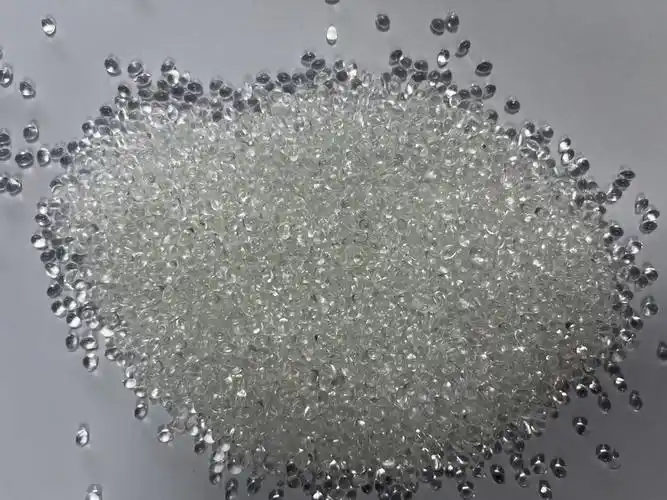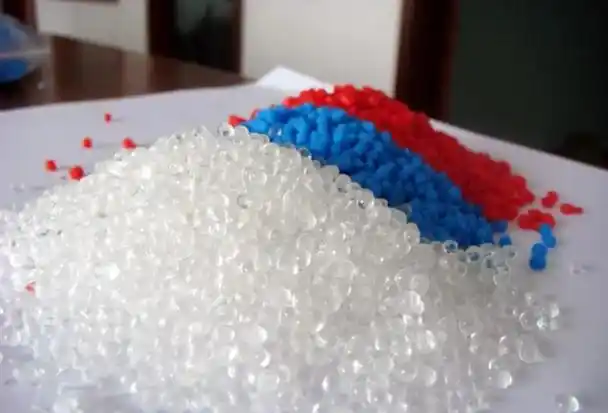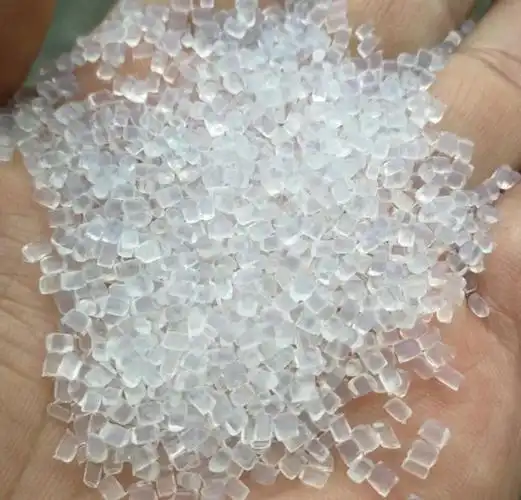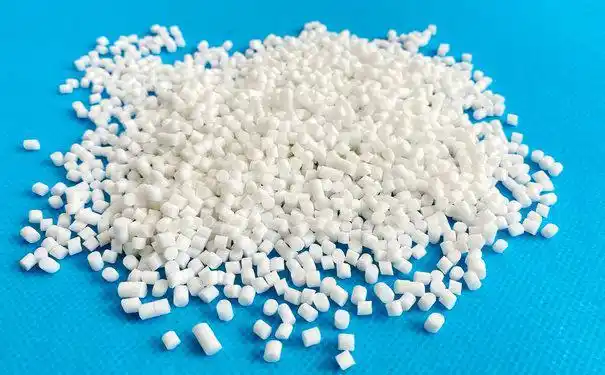Over the last fifteen years, I’ve spent countless days in polymer compounding plants and film extrusion workshops, watching tons of TPE run through shiny chill rolls. From this experience, I’ve come to realize that even the best production lines occasionally run into an age-old nemesis: mysterious white crystalline spots on cast TPE films.
If you’re landing on this page, I suspect you’re seeing these tiny white defects on your transparent or translucent TPE cast films and scratching your head. Is it resin purity? Processing temperature? Or maybe even moisture? Let me share what I’ve learned after working through these problems alongside extrusion teams, QA inspectors, and even polymer chemists.

What exactly are these “white crystalline spots”?
When we talk about cast TPE films — whether it’s SEBS, TPU, or soft TPO blends — the end goal is typically a smooth, uniform, often clear or lightly tinted film. White crystalline spots stand out sharply against this background, appearing like tiny snowflakes or specks scattered irregularly.
They often look like:
Small opaque patches embedded inside the film layer
Sometimes raised or slightly rough to the touch
More noticeable under direct light or when backlit
In most applications — like protective films, waterproof membranes, or lamination substrates — this is not just a cosmetic issue. These spots can affect mechanical strength, cause uneven thickness, and even disrupt downstream printing or lamination.
Common reasons why cast TPE films develop white crystalline spots
Having worked hands-on with dozens of extrusion lines, I’ve traced these spots back to a handful of core reasons. Let me break them down for you.
1. Inadequate melting / low processing temperature
The single most common culprit is insufficient melting of the polymer matrix, especially with SEBS or high crystallinity TPOs. If your extrusion temperature profile is too conservative, some polymer segments simply don’t melt fully and instead re-solidify as white crystalline domains.
Symptoms: Randomly scattered small white spots, sometimes increasing with line speed.
Typical fix: Raise melt temperatures by 10–20°C, especially in the final zones.

2. Resin contamination or inconsistent pellet quality
I’ve seen lines plagued by what turned out to be a batch of TPE masterbatch with high crystalline PP contamination. Even 1–2% of foreign crystalline polymers can form discrete white structures under rapid quenching.
Symptoms: More regular-shaped or larger crystalline “lakes.”
Typical fix: Inspect raw materials, run melt flow and DSC (differential scanning calorimetry) on suspicious batches.
3. Excessive chill roll cooling (over-quenching)
If the chill rolls are too cold, the molten polymer solidifies so quickly that polymer chains don’t have time to relax into a uniform amorphous state. This is especially true for higher crystalline TPE blends.
Symptoms: Dense, frequent white points, worse near film edges (where chill roll cooling can be uneven).
Typical fix: Increase chill roll temperature by 5–10°C.
4. Residual moisture or volatile contamination
Although TPE generally isn’t as moisture-sensitive as nylon or PET, small amounts of water or low boiling volatiles can still nucleate microvoids that look like white crystals.
Symptoms: Spots sometimes linked with tiny pinholes or blisters.
Typical fix: Pre-dry resin, check for excessive slip agents or additives that may volatilize.

Comparative summary of typical causes
Here’s a simple table I often use when troubleshooting on the shop floor:
| Main cause | Spot characteristics | Typical corrective action |
|---|---|---|
| Low extrusion temp | Small, scattered, irregular spots | Raise barrel / die temp |
| Resin contamination | Larger, more regular crystalline | Switch resin lot, test MFI/DSC |
| Chill roll too cold | Fine dense white dots | Raise chill roll temp |
| Moisture / volatiles | Sometimes paired with pinholes | Improve drying, purge line |
Unlike highly crystalline homopolymers like HDPE or PP, most TPEs — especially SEBS or soft TPVs — are a complex multiphase system. They typically contain:
An elastomeric soft phase (like SEBS or EPDM)
A semi-crystalline hard phase (often PP or PE)
Various oil fillers, processing aids, stabilizers
In a cast film process, as this molten cocktail hits the chill roll, it freezes almost instantly. If temperatures or mixing aren’t precisely controlled, the crystalline segments (usually PP microdomains) can separate out faster than the rest, growing into visible spherulites — which we see as white crystalline spots.
That’s why even tiny tweaks in:
Shear mixing intensity (screw design, RPM)
Cooling speed (chill roll temp, film thickness)
Minor formulation shifts (different lot of SEBS or oil content)
…can tip the scale toward visible crystallization.
Case study from my own projects
A few years ago, I was consulting for a manufacturer of breathable medical drape films using a cast SEBS/PP blend TPE, aiming for ultra-clear films. They started noticing white crystalline spots about two months into production, which coincided with a new supplier of SEBS.
By running DSC, we discovered this SEBS batch had slightly more crystalline PP residue (about 3% more than spec). Under normal extrusion it was fine, but combined with slightly colder winter ambient temperatures and chill rolls running at 18°C instead of the usual 24°C, the problem exploded.

Our solution?
Raised the chill roll to 25°C
Increased die zone temperature by 12°C
Installed a static mixer just before the die to improve melt homogeneity
The spots completely vanished, and the scrap rate dropped from 7% to under 1%.
Practical checklist I give my teams
Over the years, I’ve developed a simple troubleshooting guide. If you spot white crystalline points in cast TPE films, try this sequence:
Check chill roll temperature
➔ Increase by 5–10°C, see if spot density drops.
Raise die & final barrel zone temp
➔ Try 10–20°C higher to ensure complete melt.
Check screw speed & backpressure
➔ Higher shear can homogenize better, reducing unmelt.
Run moisture checks & pre-dry resin
➔ Especially if humidity is above 60% ambient.
Inspect resin lot, perform DSC
➔ Look for unexpected melting peaks that indicate contamination.

A professional summary table of countermeasures
| Problem source | Most effective fixes | Typical improvement seen |
|---|---|---|
| Low melt temp | Increase barrel/die by 10–20°C | Spots decrease 70–90% |
| Excessive cooling | Raise chill roll temp 5–10°C | Spots decrease 60–80% |
| Resin variation | Change batch, confirm specs | Often eliminates entirely |
| Poor melt mixing | Add static mixer / raise shear | Spots decrease 50–70% |
Q: Are these “white crystalline spots” purely aesthetic, or can they weaken the film?
They can absolutely impact performance. If they’re spherulites or unmelted fragments, they may act as stress concentrators, reducing tear and elongation. Always worth eliminating.
Q: Can we add more compatibilizer to fix this?
Sometimes, yes. A compatibilizer can improve phase dispersion. But if the root cause is low temperature or excessive cooling, adding more chemicals is usually an expensive workaround.
Q: Is this problem common with blown TPE films?
Not to the same extent. Blown film lines often cool slower and stretch more, which helps elongate or break up crystals. Cast lines cool extremely fast, making them more prone to these issues.





